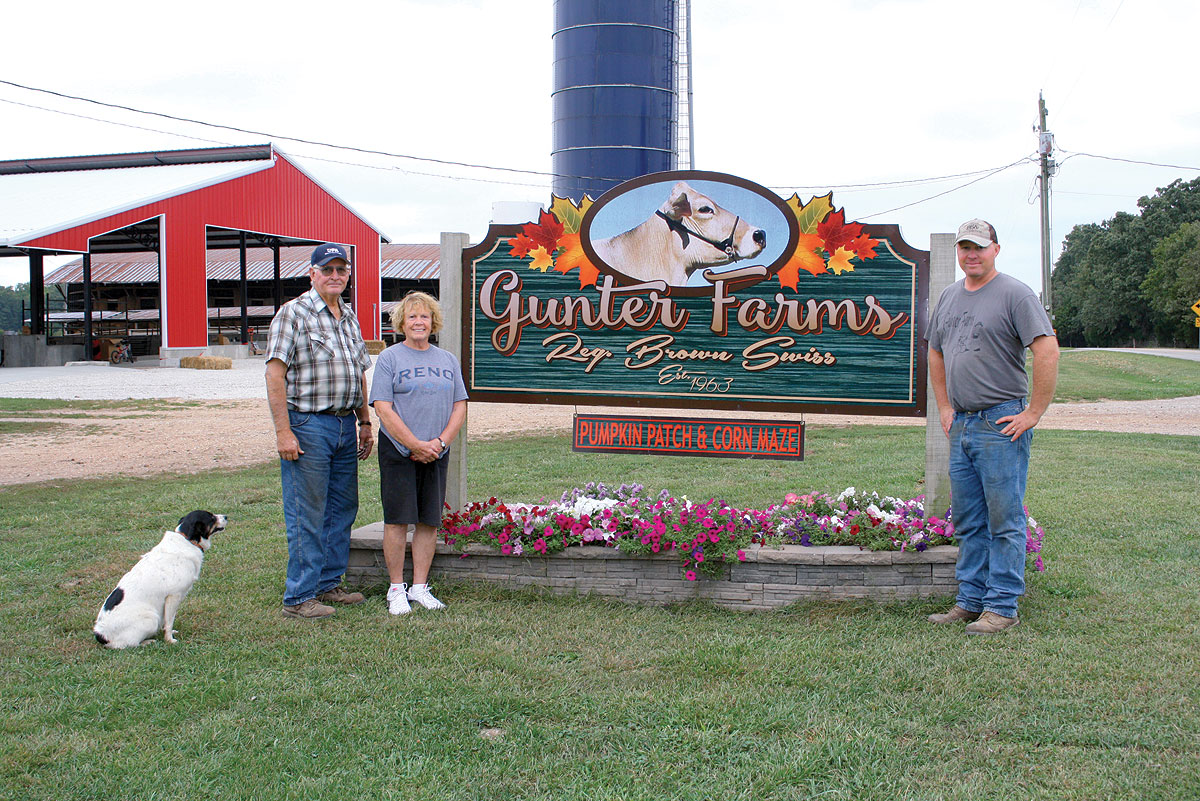
Each fall for the last 10 years, truckloads of hay drive down Cherokee Street of Seneca, Mo. The scores of hay bales are trucked in from across the region to help feed those less fortunate in the area school district.
How do hay bales feed the community’s most vulnerable residents? Just ask auctioneer and local rancher, Jim Graham, and his wife, Martha.
“It started one night when Jim couldn’t sleep,” Martha recalled. “He picked up the local paper and read an article about the Seneca Food Pantry not having enough food on their shelves to feed needy families.”
Jim, has called auctions for 55 years, which, at the age of 74, has been a large part of his life. Martha, taught school while doubling as a farm wife and auction secretary.
By 10:30 a.m. the next morning Jim had a plan and was on the phone with some ranching buddies. The first ever Farmers Feeding Neighbors Hay Auction came together in three weeks. They hauled all the hay in one day and it netted $6,000. The second year a little more was raised and in 2015, it collected a whopping $20,000 for the pantry.
“We always thought we were poor, at least we had a cold biscuit,” Jim said. “It’s hard to believe in this day and age that kids are going hungry. There is no reason a child should go hungry.”
The auction, which is held the second Saturday in September, got its roots from the generous donations of area farmers and ranchers who shared from the fruits of their labor. Now, businesses and individuals donate a wide variety of items to help the organization feed their neighbors.
“Jim likes to have fun while he auctions off donated items,” Martha added. “The event is like a big family reunion.”
The article that got Jim’s attention was written by Kathy Ginger, who along with her husband Russ and the Graham’s daughter, Michelle, have been involved in the down-home effort ever since.
Nearly 50 ranches from around the four-state area donate bales of hay in a variety sizes for the worthy cause. One rancher, Jim Morey of Quapaw, Okla., often hauls in a large flatbed trailer of bales to the auction. Hay comes from as far as, Sarcoxie and Purdy, Mo., for the annual event.
Even though there are several volunteers, Jim hauls most of the hay himself at no charge. All funds raised goes straight to the food pantry to buy more food for the ever-increasing number of needy families.
According to pantry manager Doris Mead, the pantry serves 110 families, but some families have up to 12 members under one roof. In August, they served 280 people alone, with monthly increases. The most troubling trend is that more grandparents and even great-grandparents are raising their grandchildren.
The pantry primarily serves families who are within the Seneca, Mo., school district but the organization has helped folks from out of town who may have car trouble, been in an accident or homeless and just passing through. They try to keep things on hand that don’t require cooking or special cooking utensils.
“The whole community is just amazing. Even older folks on a fixed income will give what little they have for the kids,” Doris said. “I have one woman who donates three jars of peanut butter and three jars of jelly every single week. Another elderly lady gave us 50 cents because that is what extra she had.”
The pantry is also funded by proceeds from the thrift store, which is located at the same location at 821 Cherokee in Seneca. When a family suffers a loss from a fire, loses a job or a teen needs clothes for graduation, the items are always free.
The pantry was formerly housed in a local church but came under the umbrella of the Ministerial Alliance and is guided by a board of directors. It has two employees and scores of volunteers.
Both Martha and Jim grew up in the Seneca area, in fact, Martha’s family was one of the first families to settle in the place called Lost Creek by the Indians. They still own a portion of the old home place, which still features a barn built in 1929.
Jim, well-known around town, frequently drives into town on his tractor with his sidekick, Sweet Pea, a mix cow dog, who sits in a special box attached to the tractor fender, sees the faces of his neighbors every day.
“It’s just not acceptable for people to go hungry,” Jim said. “I just can’t stand seeing that happen to my neighbors.”
Like most communities across the nation, Seneca has neighbors who need a hand up. But unlike some, Seneca has determined farmers and ranchers who share what they grow so that their neighbor never goes hungry.







